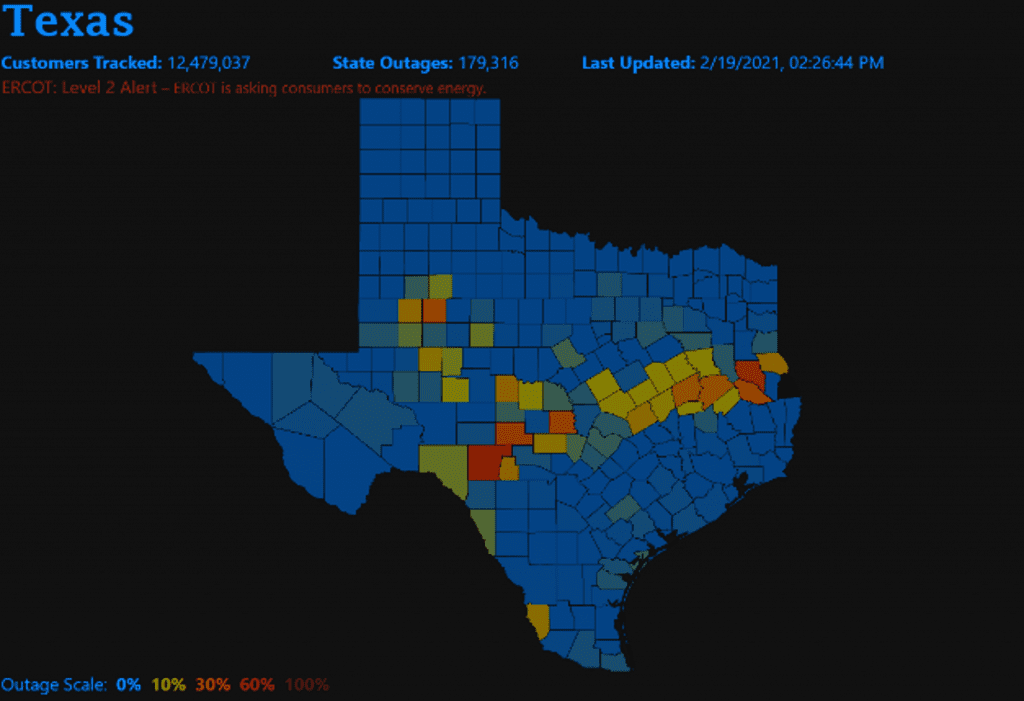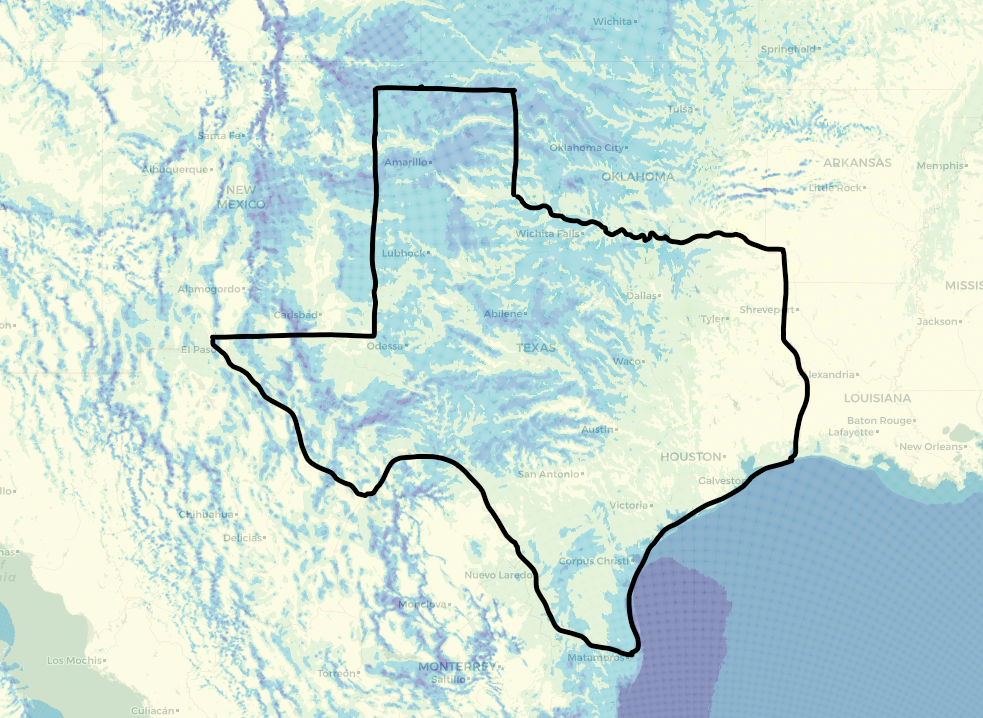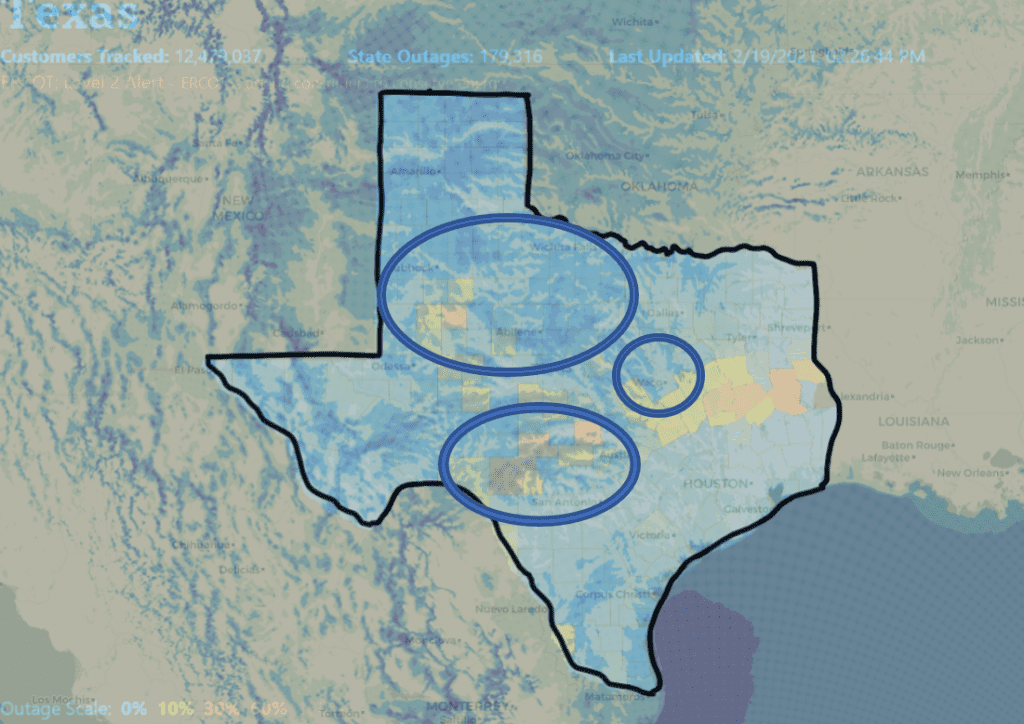What Caused the Blackouts?
As power grids throughout America continue to recover from an extreme freezing event and planned outages subside, there is no shortage of people looking for something to blame for the cause of the grid failure. Everything from State-isolated grids, frozen turbines, curtailed gas production, and poor maintenance is being discussed. This article does not seek to itemize the contributing factors. The root cause boils down to one thing: electricity demand exceeded supply.
Distributed Wind would have Helped the Grid
All types of distributed energy resources (DERs) with modern power electronics will help stabilize the grid during periods of high demand. The newest standards require that DERs like solar, wind or battery storage remain connected during grid events, rather than turning off and letting the power company stabilize the grid on their own, which was previously “standard operating procedure”. Distributed wind turbines are especially useful because the wind blows day and night providing a 24hr power capability unmatched by solar.
What is Distributed Wind Energy?
Distributed Wind is the practice of installing small(er) wind turbines close to the point of energy consumption; like at a farm, home site, school, or community. Learn more about the definition and benefits of distributed wind here. Even while remaining connected to the grid, every bit of power generated on-site by a distributed wind turbine strengthens the grid by eliminating the need to transport power long distances. Excess power generated by the turbine that is not used on site is sent back to the grid and powers anything nearby that is connected to the grid. This benefits the whole community. Now it is easy to see how Distributed Wind would help during blackouts – we just need more participation!
How Do I Get a Distributed Wind Turbine?
Not every site is appropriate for a wind turbine. First, you need to have a good wind resource. The National Renewable Energy lab has a free tool for basic wind resource assessments called The Wind Prospector. Second, you need to work through a sometimes-challenging local permitting application. But don’t worry, a certified installer can help you through this process and the Distributed Wind Energy Association is working tirelessly to improve the burdensome and inconsistent permitting process for wind turbines throughout the US. Finally, you need approval from the power company to feed power back into the grid. With the latest UL1741 certified inverters, these installations are welcome and sometimes encouraged by the local utility provider.
Battery Storage: Now It Gets Even Better
Anyone can see that the sun does not shine at night and wind doesn’t blow every hour of the day, so battery energy storage is a technology that benefits all types of distributed generators. The addition of a battery energy storage system provides the security of reliable power to a home and the grid even when the wind is not blowing.
Rescue the Grid with Distributed Wind
How can Distributed Wind help Texas? Let’s take a look at the Texas electricity grid right now as it continues to recover. A snapshot of Texas’s electricity grid outage at the time of this writing is captured (top) along with a wind resource assessment designed for distributed wind turbines.


Now let’s look at some areas where they overlap. Remember – this is only an example based upon the current state of the grid and “cherry-picking” locations where distributed wind would help the most right now.

It is immediately clear that the Texas Hill Country, West of San Antonio, has an adequate wind resource at 40m to support distributed installations. These installations would not only help the local grid but would also take some of the load off of major nearby urban centers, like Austin and San Antonio where a small wind turbine might not be practical in the back yard of a subdivision. From this map, it’s already easy to see why Texas is America’s wind generator.
Energy Equity – The Future of Distributed Generation
Distributed generation not only puts power into the hands of consumers, it also creates jobs and income in areas where wind might not have previously been a valuble resource. It also uplifts communities, and does so in a green and sustainable way. The Distributed Wind Energy Association believes that distributed energy generation is the future, and invites you to learn more. Find out what it’s all about and join conversation today at distributedwind.org.
